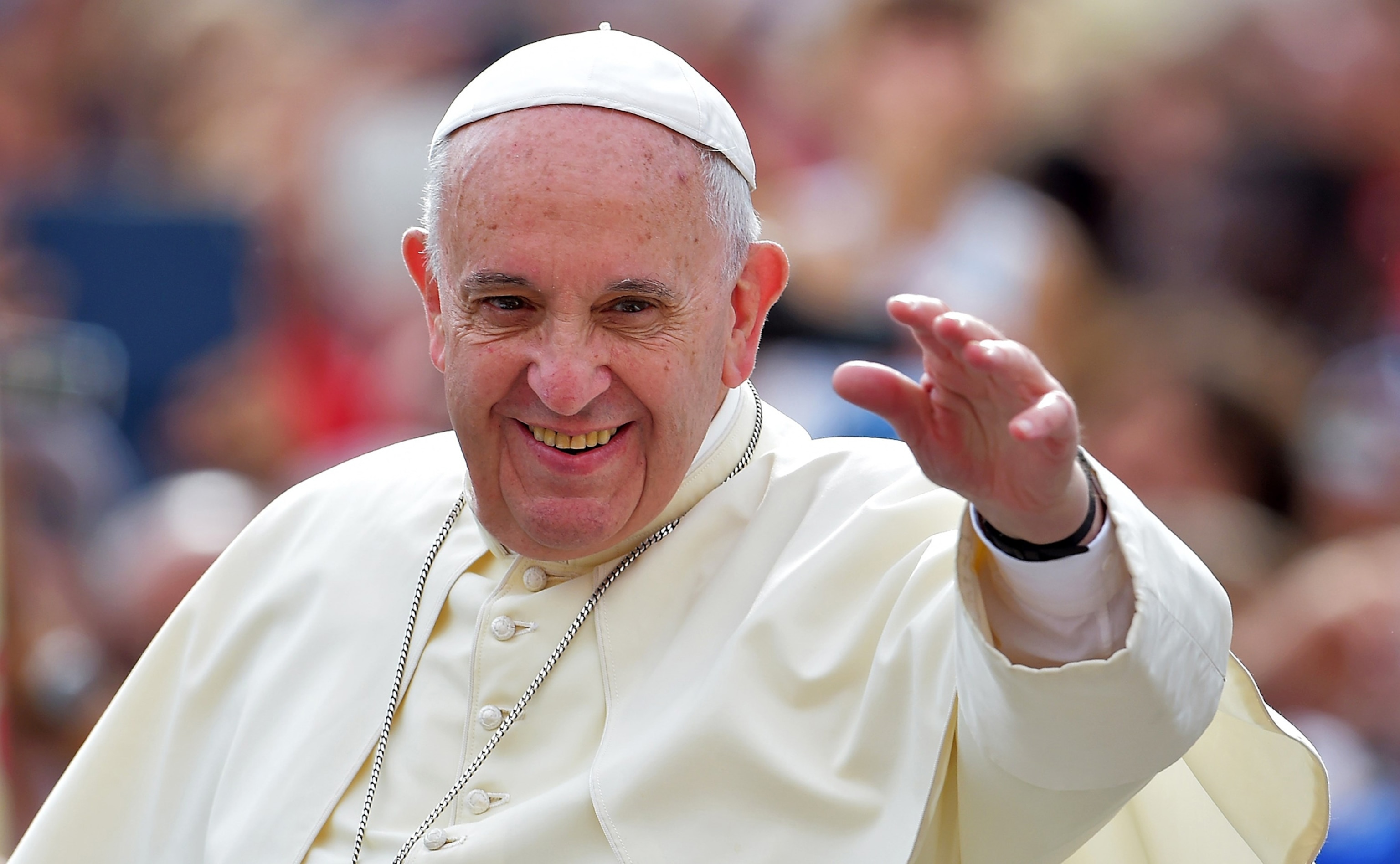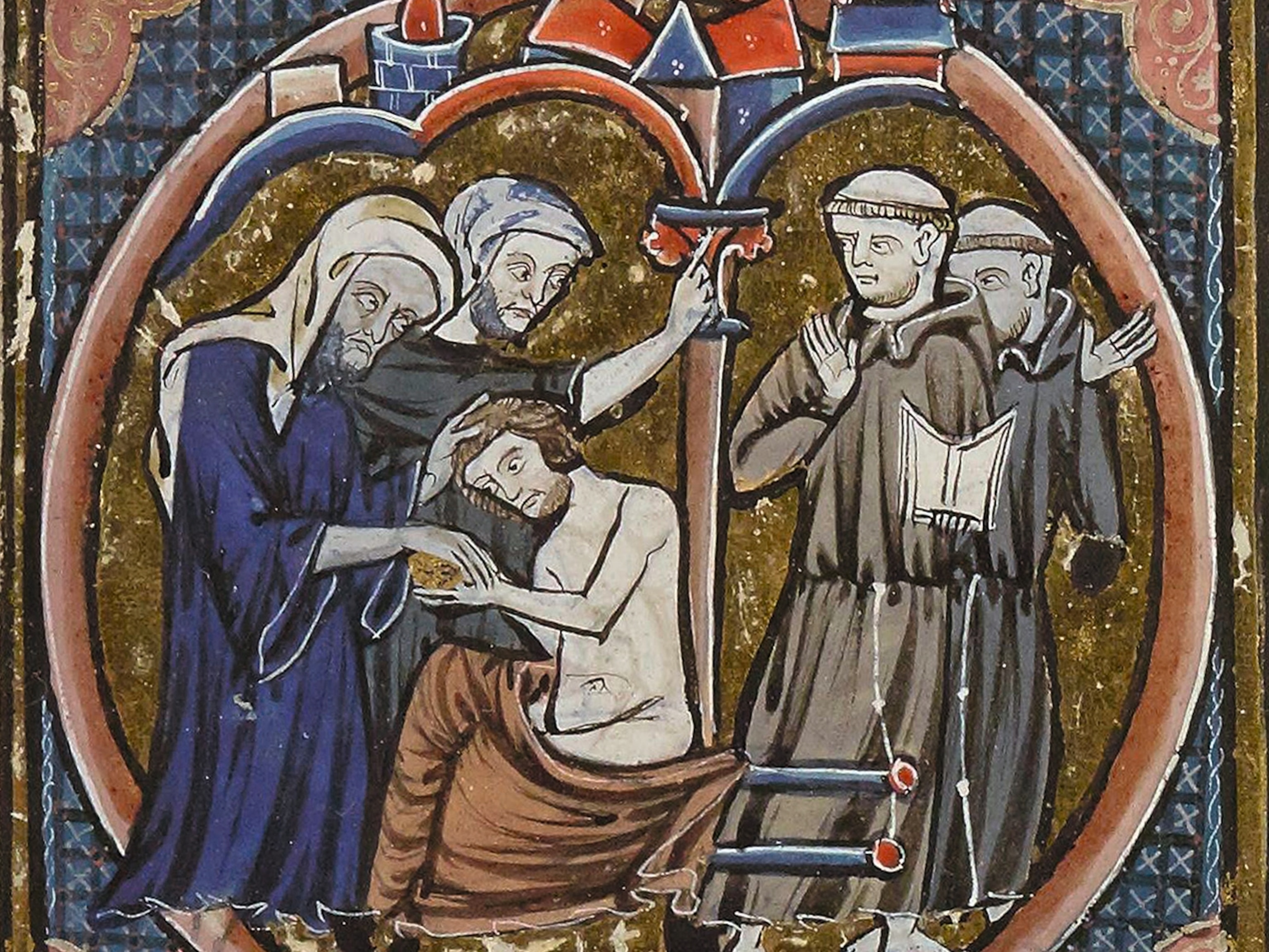
Saint Francis of Assisi Inspired the Pope—and Me
They may be eight centuries old, but the words and acts of ecology’s patron saint resonate in this era of environmental crisis, one nature lover argues.
“Can you hear me, Saint Francis?”
I am standing on an escarpment at a place called Denniston in New Zealand’s South Island. Cloud wreaths the sandstone pinnacles that jut into the abyss.
St. Francis had his sacred mountains, and I have mine. This high plateau is somewhere I feel saturated with nature’s holy enchantment. On rainy nights I have searched for giant snails in the springy moss and dwarf scrub that carpets the rock. On still mornings I have stood on the lip of the precipice and listened to the songs of bellbirds rising like choristers’ psalms from the forest below.
St. Francis would have liked it here.
Perhaps that’s why Peter Hooper, a local schoolteacher and poet, felt moved to call to him in one of his poems, writing, “Can you hear me, Saint Francis?” Hooper was contemplating the environmental destruction wrought by coal mining and in nearby landscapes, turning them into what Hooper called “soulless land-utilisation-scapes.”
He invoked Francis because the medieval saint famously embodies a tradition of respect and compassion for the community of nature. And now, four decades after my countryman wrote that poem, Francis is a name on everyone’s lips. (Read "Will Pope Francis Change the Vatican? Or Will the Vatican Change Him?")

When Jorge Mario Bergoglio of Argentina was elected leader of the Catholic Church in March 2013, he could have chosen from a list of popular pope names and become, for example, the 24th Pope John, the 17th Gregory, the 16th Benedict, or the 14th Leo. Instead, he chose a name that had never had the word “pope” in front of it, yet belongs to one of the best-known religious figures of all time: Francis of Assisi.
Bergoglio told reporters he did so because St. Francis is “the man of poverty, the man of peace, the man who loves and protects creation.” He added wistfully: “How I would like a church that is poor and that is for the poor.”
Francis's Siblings: Wind, Water, Fire
The pope lost no time in taking up his namesake’s concerns. In his first exhortation to the faithful, delivered in late 2013, he identified some of the societal challenges he intends his papacy to confront: poverty, inequality, environmental degradation. Despite—or perhaps in keeping with—its title, “The Joy of the Gospel,” his letter is a manifesto for radical change.
In it, Francis excoriates the “economy of exclusion,” which he calls a distorted financial system that “rules rather than serves.” Under such a system, he writes, that which is fragile and lacks a voice—such as the environment—“is defenseless before the interests of a deified market.” (Read "10 of Pope Francis’s Most Provocative Quotes")
It is we who must come to the earth’s defense, declares the pope in his second major publication, a 40,000-word environmental missive subtitled “On care for our common home,” published earlier this year. Here Francis denounces the tyrannical human-centeredness he considers to be the root of the planet’s woes.
Much of the Christian church has been on the wrong side of the environmental movement, doctrinally asleep during the green awakening.
“If we no longer speak the language of fraternity and beauty in our relationship with the world, our attitude will be that of masters, consumers, ruthless exploiters,” he writes. (Read about how the Vatican has been going green for decades)
“Fraternity” is a St. Francis kind of word. Treating earth’s creatures as brothers and sisters was a joyous expression of the life he lived in communion with the divine. And he extended this fraternal care to not just creatures. To Francis, the sun was “Brother Sun,” the moon “Sister Moon.” Likewise wind, water, and fire were his siblings. Elemental forces and living presences were to be acknowledged as you would a friend.
It was for this radical inclusiveness that Pope John Paul II, in 1979, named St. Francis the patron saint of ecologists.
Of course, Francis was no ecologist as we know the term—a person who studies the interactions between organisms and their environment. But he was surely an ecologist in the deeper sense, someone who saw the interconnectedness of everything. For Francis, the thread that runs through the universe was divinely placed. All life—from worms to wolves—proceeds from God and should give praise in return.
Indeed, whether Francis was moving earthworms out of harm’s way on roads or reprimanding a wolf for devouring the residents of Gubbio (and then brokering a food-for-safety deal between the wolf and the terrorized townsfolk), he demonstrated a way of living with the natural world that continues to inspire people eight centuries later.
Perhaps the best known celebrations of St. Francis today are the annual blessing-of-the-animals ceremonies held by many churches on the anniversary of his death in 1226. On these occasions, creatures great and small take part in an ecological sacrament with their human caregivers.
On one occasion he sang a duet with a nightingale which is said to have lasted all night. At the end of the exchange, Francis admitted he had come off second best.
Yet despite the saint’s renown, for generations of believers Francis’s feeling for nature has been something to admire rather than to emulate. Much of the Christian church has been on the wrong side of the environmental movement, doctrinally asleep during the green awakening. Hampered by a narrow interpretation of scripture, traditional teaching has unwittingly bolstered what the pope lambasts as “our unrestrained delusions of grandeur”—rulers over the earth rather than partners with it.
Limits Transgressed
But the ecological example of Il Poverello, the “little poor man” of Assisi, is stirring believers to re-evaluate their relationship with the planet and to participate in the “ecological conversion” urged by Pope John Paul II in 2001. This is our true calling, said John Paul II: to interact with creation so as “to make all its potential shine.”
That was certainly St. Francis’s path. He not only exhorted his “brother birds” and “sister cicada” to be minstrels of God, but showed consideration for their needs. He built nests for doves, and once redeemed two lambs destined for slaughter by offering the shepherd his cloak in exchange for their lives. As one St. Francis scholar has written, “He proclaimed the indissoluble kinship and community between humans and their fellow creatures under God.”
And he did so with irrepressible joy. On one occasion he sang a duet with a nightingale which is said to have lasted all night. At the end of the exchange, Francis admitted he had come off second best.
Such enchanted moments belong to those who, as Thomas Berry, a Catholic priest from North Carolina, said, see the world as “a communion of subjects, not a collection of objects.” They are the moments that bring me to Denniston Plateau and dozens of places like it—urban parks and mountain passes, the lonely tree growing in a city sidewalk and the alpine buttercup bursting through snow, and the infinite strangeness and allure of the undersea world.
My poetic predecessor asked: “Why should we shatter the world like a snail-shell under our feet?” He had been to Assisi. Like Il Poverello, he lamented his countrymen’s loss of “the community of man-in-nature which is our true estate.”
There is no sin in consuming; humans can’t photosynthesize, after all. Nor in using earth’s bounty. Some of my relatives mined coal underground here, a century ago. They lie in unmarked graves hereabouts.
But there are limits, and they are being transgressed. Even a country like New Zealand, a world leader in conservation, is also a leader in imminent extinctions, having the highest proportion of threatened species in the world.
It makes me want to call out, too: “Can you hear me, Saint Francis?”
Or more to the point: “Can I hear you?”
Editor's Note: Kennedy Warne has been writing for National Geographic since 2000, most recently on marine protection in South Africa. His views do not necessarily represent those of National Geographic.







